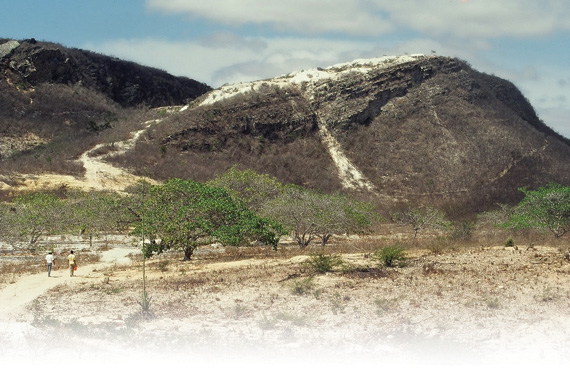|
|
|
Colored Gemstone
The Paraíba Promise
By Text & Photos By Brian Cook

| | View of the original Batalha Mine located in São José de Batalha, Paraíba, Brazil. |
Heitor the Fool!” This was the general comment that locals used to describe Heitor Dimas Barbosa, the man obsessed with digging for gems that he believed would be completely different from anything anyone had ever seen before. Urged on by an inner guidance, Barbosa dug and tunneled for seven years in a hill behind the village of São José de Batalha, Paraíba, Brazil, a region that is famously arid, rugged and poor, with one of the lowest per capita incomes in the nation. It is a land with nearly no water and scorching dry seasons. In 1981, when Barbosa first started his quest, electricity was more than a decade away. In 1987, the first gem was found at the Batalha Mine in Paraíba. Barbosa had unearthed one of the rarest gems of the world: a tourmaline uniquely colored by copper — cuprian — that creates a mesmerizing vivid blue and blue-green hue with an electric glow. These startling gems emerged onto the world stage in 1990 in Tucson, Arizona, at various venues during the February gem shows. Due to their unreal neon appearance, the gems were initially met with skepticism. Nonetheless, these tourmalines from the Paraíba mine that were selling for $250 a carat at the start of the shows skyrocketed and six days later, at the end of the shows, were selling for as much as $2,500 a carat. Skepticism had been replaced by awe.
YOU MUST HAVE JAVASCRIPT ENABLED TO VIEW THE SLIDESHOW Article from the Rapaport Magazine - October 2013. To subscribe click here.
|
|

|
|